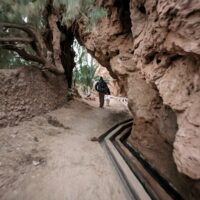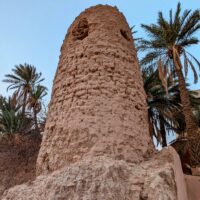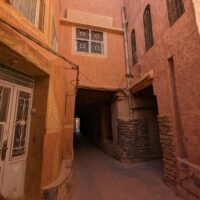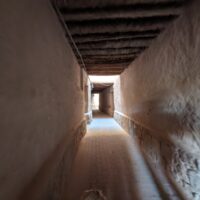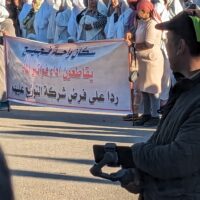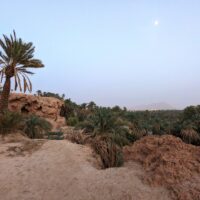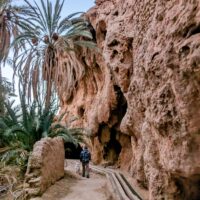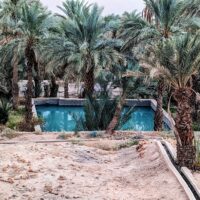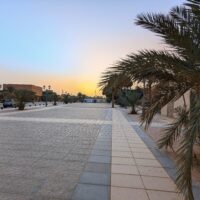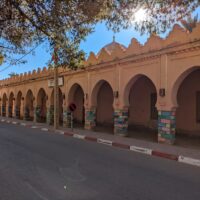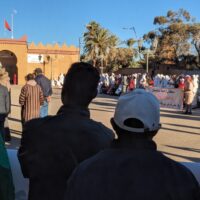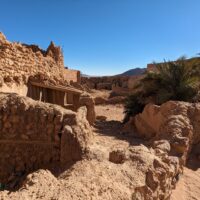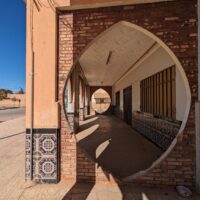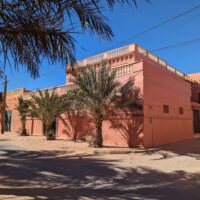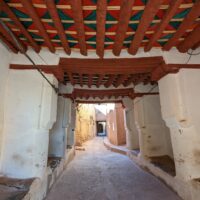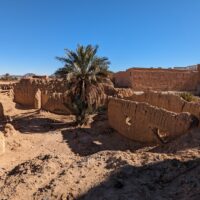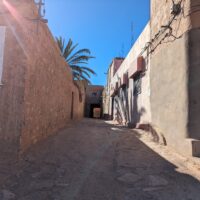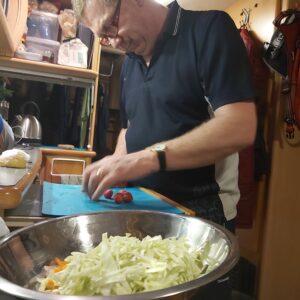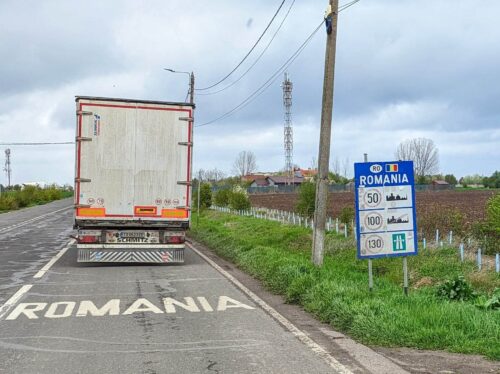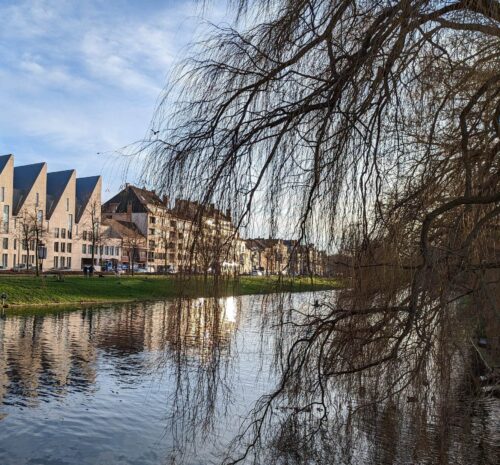Figuig is a fairly large town close to the Algerian border in North Eastern Morocco. Once a thriving gateway between the two countries it is now an isolated outpost. Since the closing of the border in 1994 there has been a decline in the towns prosperity, with many people choosing to leave. Consequently parts of the historic quarter of the town have started to fall into disrepair.
Figuig or Figig (Arabic: فجيج, romanized: Fijīj; Figuig Berber: Ifeyyey) is an oasis town in eastern Morocco near the Atlas Mountains, on the border with Algeria.
The town is built around an oasis of date palms, called Tazdayt, meaning “palm tree” in the Berber language, surrounded by rugged, mountainous wilderness. Modernization has somewhat raised the standard of living, and drawn much of the town’s population away, so that it is now struggling to reach stability. Its population in 2014 was 10,872, down from a peak of 14,571 in 1982.
The Ksour Range is a mountainous area extending between Figuig and El Bayadh.
The palm oasis
The ruins
The narrow streets
The Rally
Hope You Enjoy!
Please leave us a comment!

